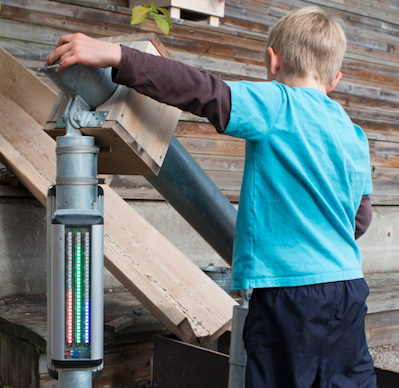Digital and Physical Play Environments
The focus in this project is children ́s play, that is one of the most important tools for them to understand the world.

A big societal challenge is that cities is increasingly less accessible for children ́s play, that means that they have to depend on adults in order to go out doors and play. When housing areas in Sweden are restored important ideas about how to plan good environments for play close to home are forgotten. This means that run down play areas between houses are taken away. In this project we instead try to support and design for restoration of these play areas close to home.
The view in this project is that both the digital and the physical can provide qualities that can benefit play and increase well-being. A play concept called DigiPlayScape was developed and has been evaluated at a schoolyard and at housing areas with children as participants. Digital components such as sensors that register sound, moisture, and movement are integrated in a landscape and let children use natural materials such as stones, sand, mud, water and pine cones to excite the sensors and get sound and light feedback from the equipment.
Link to project website .
Team
- Eva-Lotta Sallnäs Pysander, Professor at Royal Institute of Technology
- Annika Waern, Professor at Uppsala University
- Jon Back, Assistant Professor at Uppsala University
- Susan Paget Associate Professor at Swedish University of Agricultural Sciences
- Emma Simonsson, URBIO AB
- Ludvig Nilsson, Nordic Parks
- Per Hermansson, Prisma Tibro AB
- Anna Bergendahl, Tom Tits Experiment AB
- Mimmi Beckman, Örebro Municipality
- Mariana Vodovosoff, Huddinge Municipality
- Madeleine Nobs, NCC AB
Funding
VINNOVA UDI step I-III
